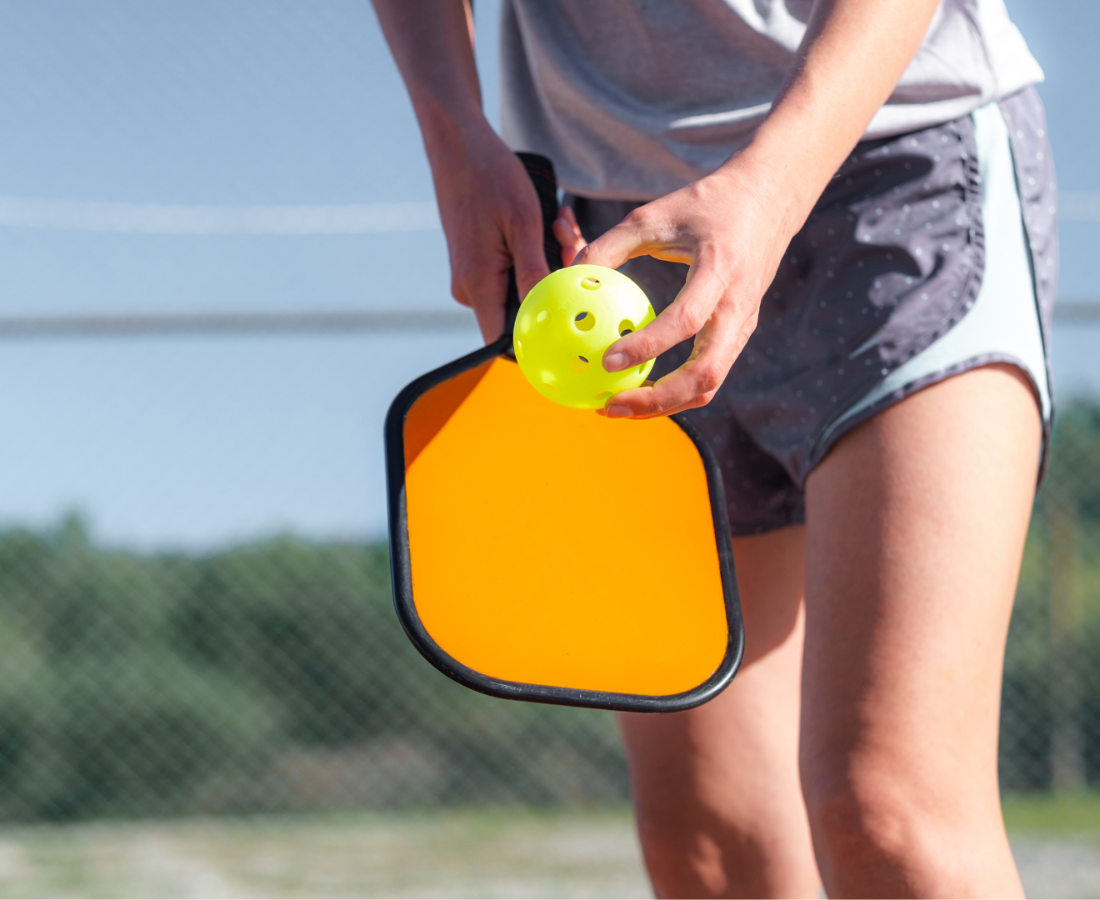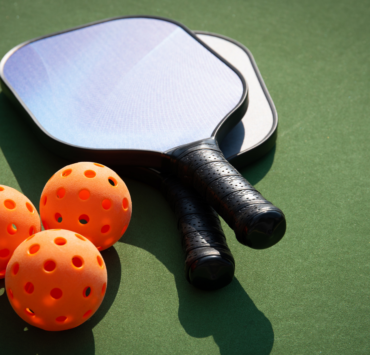Your friend has been begging you to play pickleball with them for weeks. Now, you’ve finally agreed to join them on the pickleball court.
There’s just one problem. You have no idea how to play, and you’d like to impress your friend by knowing at least a few of the rules ahead of your first match.
We’re here to help. Consider this your crash course in pickleball, covering all the basic rules so you can wow your friend – and crush your opponents – when you step on the court.
What To Know About The Pickleball Court
The best thing about pickleball is that it can be played anywhere, from your driveway to a traditional pickleball court to a revamped tennis court.
A pickleball court is 44 feet long and 20 feet wide, about the size of a badminton court. The line along the length of the court is called the sideline. The line at each end of the court is called the baseline. There is a vertical centerline down the middle that connects to the non-volley line.
The centerline and the non-volley line break the court into three sections: The non-volley zone, the right service area, and the left service area.
What Is The Non-Volley Zone?
The non-volley zone is also known as the kitchen. You cannot stand in the kitchen. You can take the ball out of the air from outside the kitchen, and you can go into the kitchen after the ball bounces, but you can’t volley and end up in the kitchen. In other words, you cannot volley – or take the ball out of the air – when you are standing in the non-volley zone.
How to Play Pickleball
There are a few basic rules you must know to play pickleball. Let’s break them down one by one.
How to Serve
Every point begins with a serve, and you can only score when you are serving. The player serving continues to serve until they lose a point, and then the serve transfers to their playing partner. Once that player loses the point while they are serving, the other team serves.
To serve, stand behind the baseline on the left or right service side. When you serve, you must connect with the ball below your waistline and land the service in the opposite service area. Toss or drop the ball and hit it out of the air or let it bounce. For example, if you are standing behind the baseline on the left service side, your serve must land in the right service area.
Your serve cannot land in the kitchen.
The Double-Bounce Rule
When the ball is served, it must bounce before your opponent returns it. Then, it must bounce once on the other side of the court before you can hit it back. For example, if you serve from the left service side, your serve must bounce once in the right service area before your opponent can return it. Then, regardless of where your opponent hits it, you must let it bounce once before you hit it back. After that shot, you can hit the ball without letting it bounce.
As with other paddle and racket sports, if the ball bounces twice, the point is over.
How to Use the Non-Volley Zone (or Kitchen)
You will hit two strokes in a pickleball match besides your serve: a volley and a groundstroke. A groundstroke is hit after the ball bounces once. A volley is hit out of the air without bouncing.
You also cannot stand in the kitchen. If you enter the kitchen, you must exit as soon as the ball is hit.
As long as you are not in the kitchen you can hit the ball however you want. You cannot hit a volley in the kitchen or standing on the kitchen line, which is part of the kitchen. You must let it bounce and hit a groundstroke. Often that shot will be a dink, a soft shot hit on a bounce or a powerful, low-trajectory drive shot aimed at your opponent’s feet.
How Pickleball Scoring Works
Scoring in pickleball is a little different than in sports like tennis or ping pong. Before you serve, you must call out three numbers: your score, your opponent’s score, and the number of the person serving. Remember, both players get to serve.
For example, let’s pretend that you and your partner are now serving. You are serving first. Before you serve, you will call out the score: 4-1-1. You have four points, your opponent has one point, and you are the first server. Your serve goes out. Your partner is now serving and the score is 4-1-2.
At the start of the game, however, the team serving starts with their second server. The score when the game starts is 0-0-2. When the serving team loses a point, their opponent takes over and begins serving.
It’s Time to Hit the Pickleball Courts!
These rules can seem complicated. That’s totally normal! It takes a while to get used to the unique scoring style and court setup. Most pickleball players are excited to help newcomers learn the game, so don’t be afraid to ask plenty of questions the first few times you play. Before you know it, you’ll be the seasoned veteran helping newbies find their passion for pickleball.



